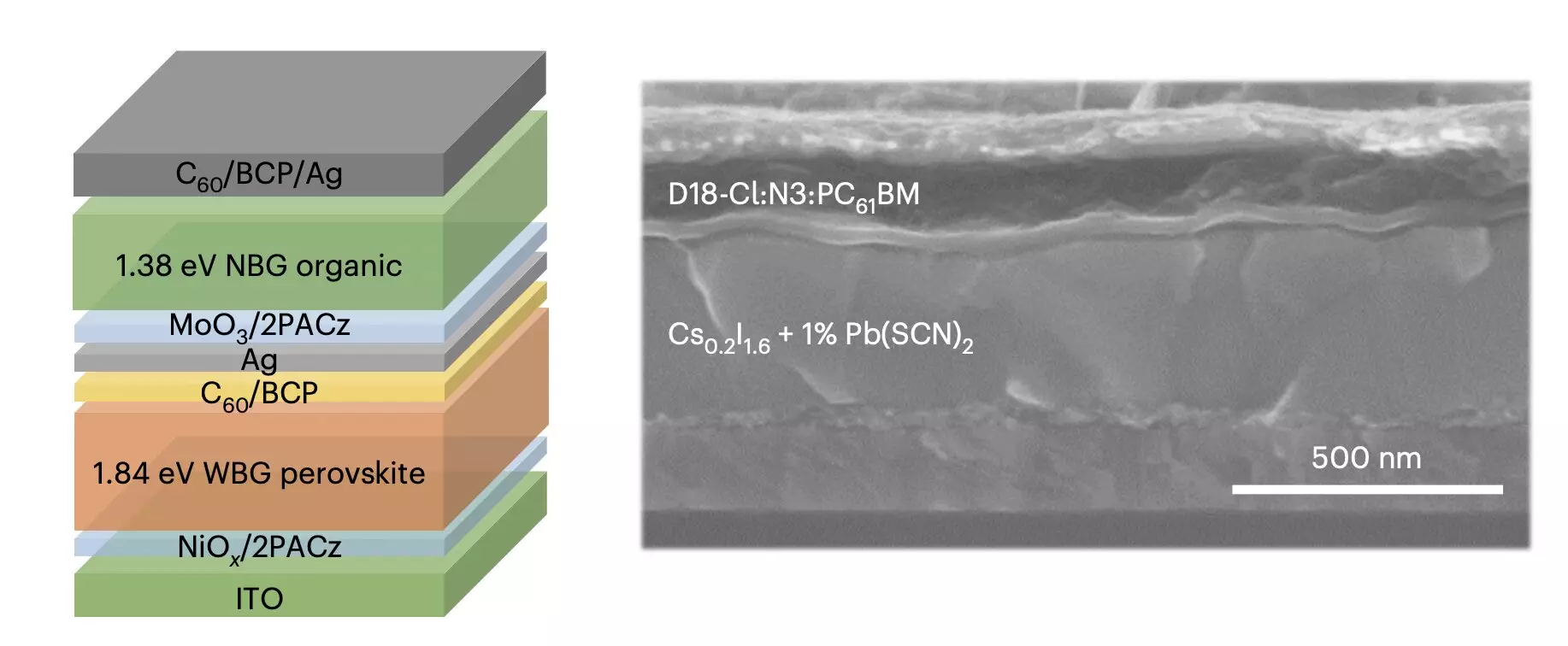The field of solar cell research has been witnessing significant advancements in recent years, with a focus on exploring various designs to enhance the efficiency and stability of these devices. Among the emerging technologies, organic solar cells based on perovskite materials have shown great promise due to their cost-effective fabrication, flexibility, and tunability. While organic solar cells have demonstrated a maximum certified power conversion efficiency (PCE) of 19.4%, which is lower than that of silicon-based cells, there is a growing interest in improving their performance by combining them with wide-bandgap perovskite cells.
One of the major challenges in the development of perovskite/organic tandem solar cells is the occurrence of phase segregation in wide-bandgap perovskites. This process hinders the performance and stability of the tandem cells by affecting recombination processes at the interconnecting layer. To address this issue, researchers at Soochow University’s Suzhou Key Laboratory of Novel Semiconductor-optoelectronic materials and devices have devised a novel strategy that involves the use of a pseudo-triple-halide alloy in mixed halide perovskites based on iodine and bromine.
The introduction of pseudo-halogen thiocyanate (SCN) ions into iodine/bromide mixed halide perovskites has been found to prevent halide elements from segregating inside the solar cells. By incorporating SCN ions, the researchers were able to enhance crystallization and reduce grain boundaries, thereby improving the overall performance and stability of the perovskite/organic tandem cells. The SCN ions inhibit halide ion migration and facilitate the movement of electric charge in the solar cell, leading to reduced energy losses in the wide-bandgap perovskite cells.
In testing the effectiveness of their strategy, the researchers observed a significant improvement in the performance of perovskite/organic tandem solar cells. The tandem cells achieved a remarkable PCE of 25.82% and a certified PCE of 25.06%, along with an operational stability of 1,000 hours. These results demonstrate the potential of the pseudo-triple-halide alloy in enhancing the efficiency and stability of wide-bandgap perovskites, paving the way for the development of more robust and efficient perovskite/organic photovoltaic systems.
In the future, the methodology introduced by Zhang, Chen, and their collaborators could be further expanded to explore different compositions of wide-bandgap perovskites. This continued research and innovation hold the promise of advancing the field of solar cell technology, leading to the development of next-generation photovoltaic systems that are not only highly efficient but also durable and cost-effective. By addressing the challenges posed by phase segregation in perovskite materials, researchers are contributing to the realization of a sustainable energy future powered by innovative solar technologies.


Leave a Reply